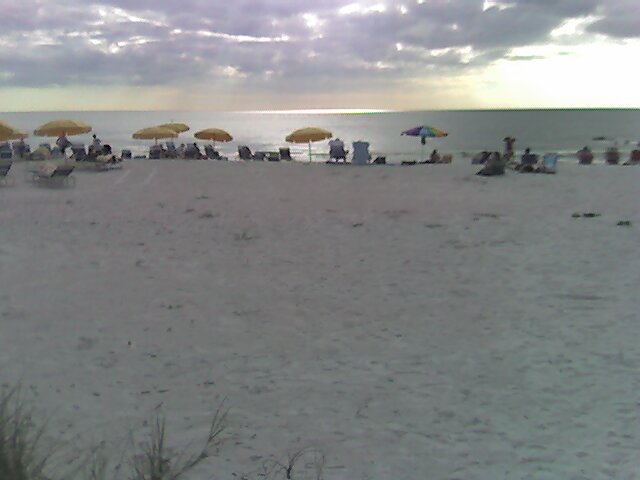1994: No steady email account. Burned through at least eight AOL screen names with those "First 10 Hours Fee" accounts before they finally told me to stop. Also tried Compuserve and Prodigy. At this point just trying to figure out what this Internet thing is.
1995: First real email account – @vt.edu. Eudora 1.5.2 (I think). POP3, no SSL. Everything goes to my inbox. I delete mail after I’ve read it. Wanted to run OS2/Warp, but VT dept of Engineering required Windows 3.1.
1996: Switched to Netscape Mail. Still POP3 and no SSL. Upgraded to Windows 95.
1997: MS Exchange account at Lockheed Martin – @lmco.com. Used company directory and shared calendar. Also had an AIX Unix mailbox at Lockheed, but didn’t know how to use it.
1997: Signed up for first free webmail account so that I could talk to friends while at work – @hotmail.com. 2MB mailbox, so I must delete mail after I read it. Microsoft would buy Hotmail within a year.
1998: Assigned to Defense Messaging Systems (DMS) at Lockheed, where I got to play with the email encryption and archiving technologies used by the US defense department. My project was to integrate an Oracle + EMC archiving solution with MS Outlook clients. The archiving burden was placed on the email user via an "Archive This" button, which was pretty stupid.
1998: At some point back at VT I upgraded to Windows 98 and Outlook 98. Still POP3, no SSL for my @vt.edu account. Started using mail filtering rules to organize my inbox. Stopped deleting mail.
2000: Laptop crashes. A year of Outlook data lost. Reinstalled with Windows 2000 and Outlook 2000. Much more stable.
2000: Hosting my first mail server. Learning a lot. Still using POP3 without SSL. Religiously using mail filtering rules so that nothing goes to my inbox. Everything is organized.
2001: Finally switched to SSL. Had to run stunnel on the server to wrap the plain-text ports.
2002 – 2004: Still a big fan of POP3 and Outlook 2000. 100+ folders. 100+ filtering rules. Archiving anything older than 90 days to a separate PST file.
2004: Turned off Outlook’s auto-check feature. I hate getting interrupted by new email all day long. Now I must press Send/Receive to get new mail. Now I control my email rather than my email controlling me.
May 2005: Reached Outlook’s 2GB storage limit in my primary PST file, and Outlook is now dead and my data is corrupt. What a stupid MS bug. Tried at least 5 recovery programs before finding one that retrieved about 75% of my data. That’s it, I hate you Microsoft… switching to Thunderbird and IMAP.
June 2005: Loving IMAP! Loving Thunderbird! Set up all of my filtering rules via webmail so that it gets filtered during delivery. My mail folders look the same when I check webmail while traveling, which is incredibly convenient.
July 2005: Shit… Just realized that I there is no decent IMAP client for the Treo that can check 100+ IMAP folders efficiently. Many don’t even support nested folders. All are slow when they do. For now, when I travel I send a copy of all of my mail to a POP3 account and use VersaMail. Really need a 2 inch wide minimal html version of webmail.
Later 2005: Want to switch to webmail rather than Thunderbird, but webmail’s folder handling is still too clunky, and folders with thousands of emails are too slow for me to use. Sticking with Thunderbird IMAP for now.
June 2006: A ton of webmail performance improvements have been released this year. Large folders are now fast, switching between folders is now fast. Most everything is AJAXed. Here it goes… switching to webmail.
July 2006: Loving webmail, especially search! I miss multi-colored flags though (Thunderbird keywords). Lets see if I can push this feature with the webmail team.
Nov 2006: Sweet… multi-colored flags added to webmail beta during Hackathon 3. Thanks Steve!
Nov 2006: Finally… I can access all of my IMAP folders from my Treo, via Webmail Mobile.
Dec 2006: Started using webmail’s calendar now that beta has shared calendaring. Everybody at Webmail can see where I am every second of the day, and schedule meetings with me. Also switched all of my task lists to webmail.
Dec 2006: Oops. Used $75 in data transfer on my cell last month checking Webmail Mobile. Switching to Verizon’s unlimited data plan. Checking webmail from my Treo is going to be awesome over the holidays.
Dec 2006: 618 MB out of 10 GB used. I still have a habit of deleting emails that have large attachments. I should stop that.
Still need…
– notes inside of webmail (I use my Drafts folder for notes right now)
– file storage in webmail (again, I use my Drafts folder to store files right now)
– better contacts management in webmail
– calendar/contacts/tasks syncing between webmail and Treo
